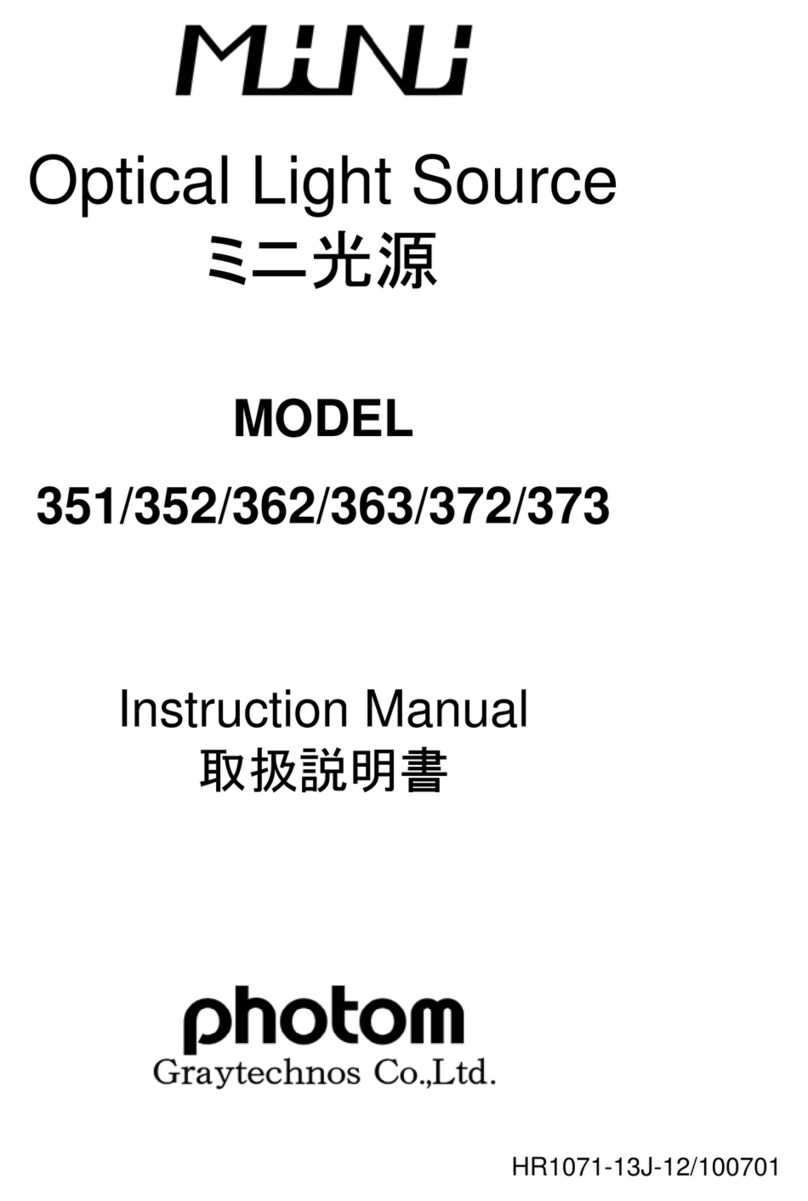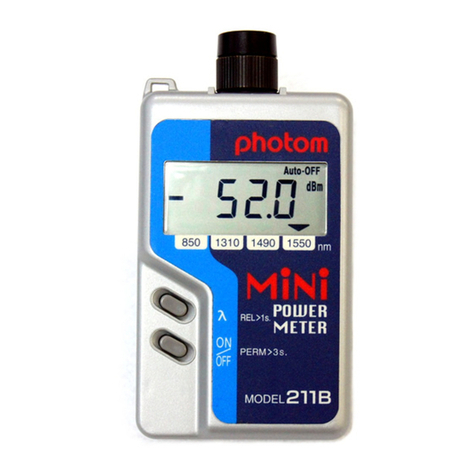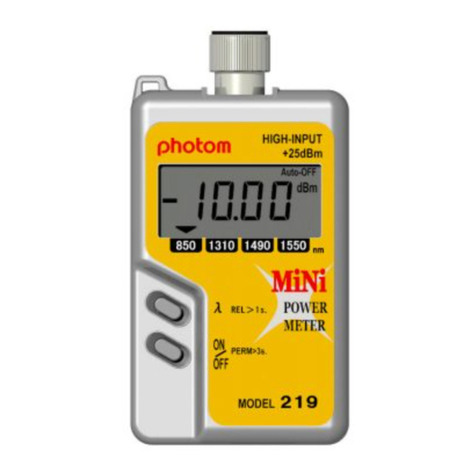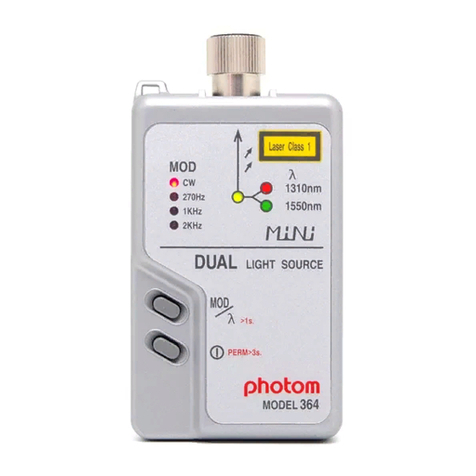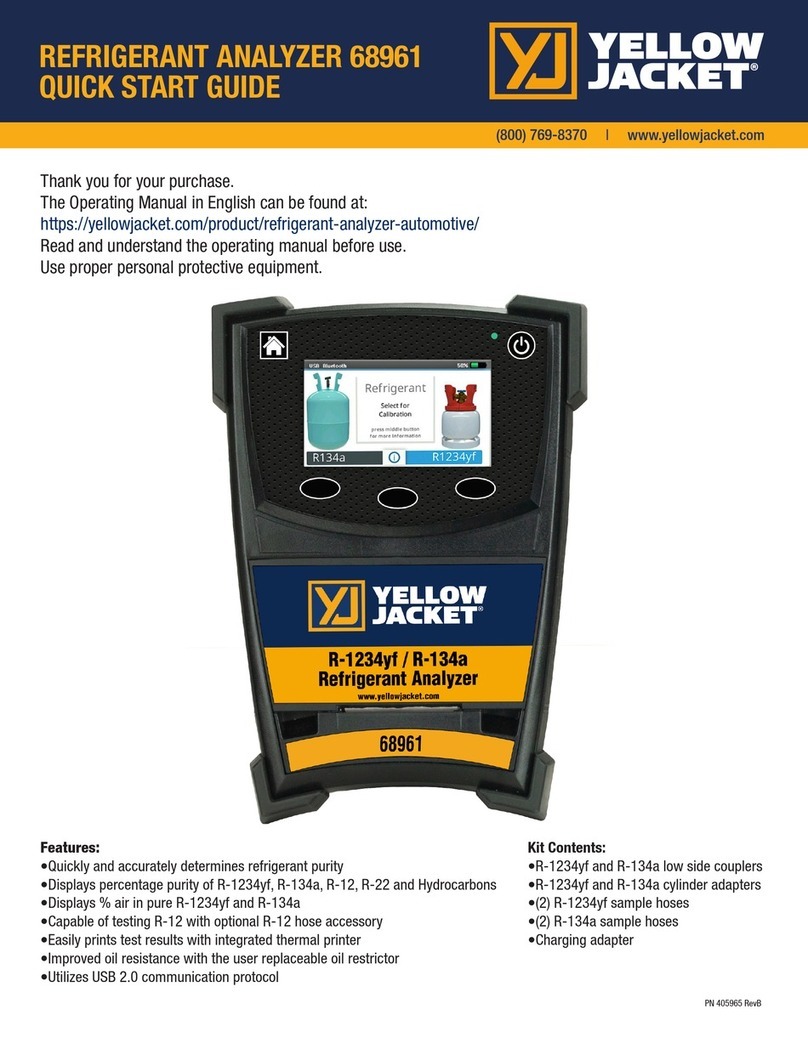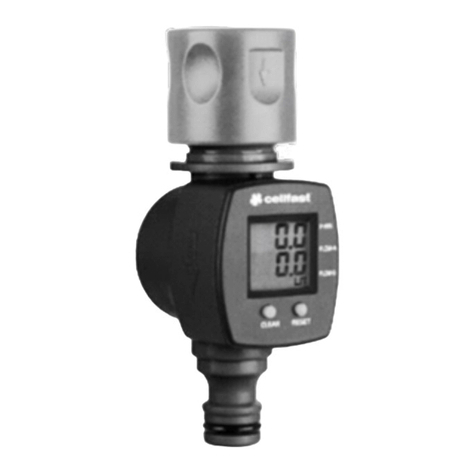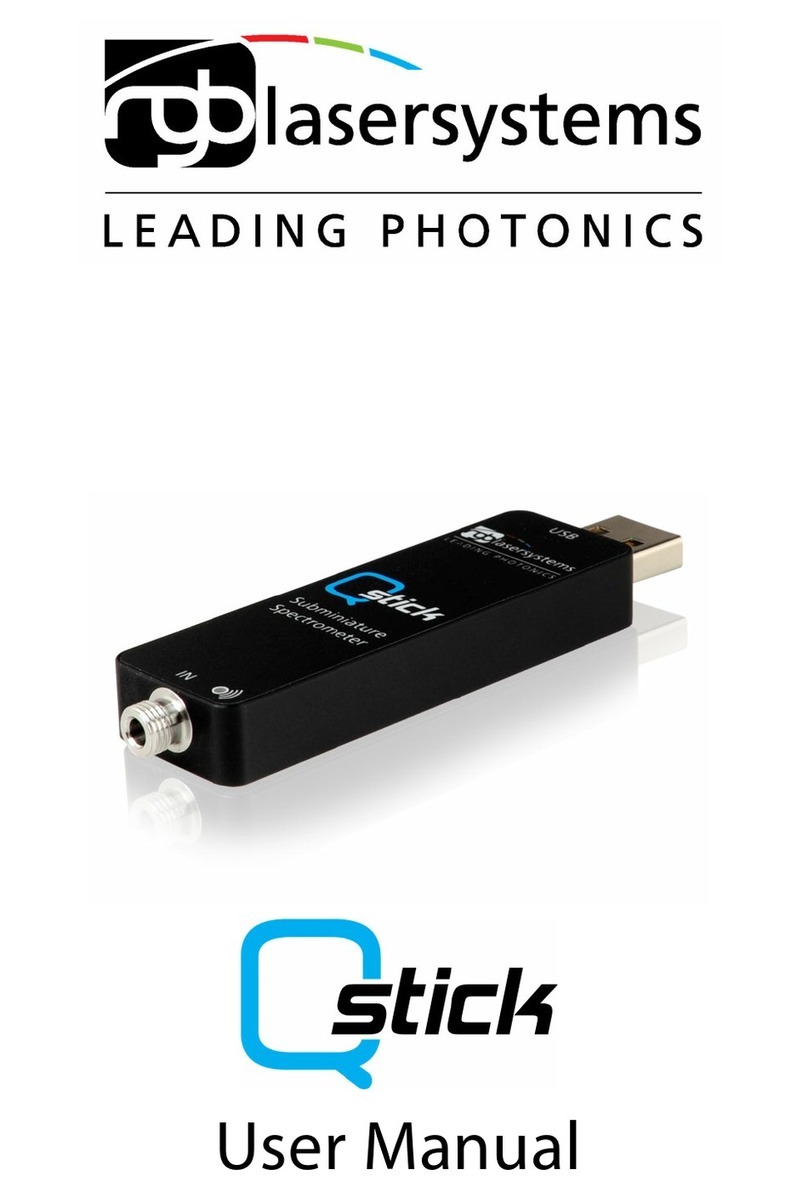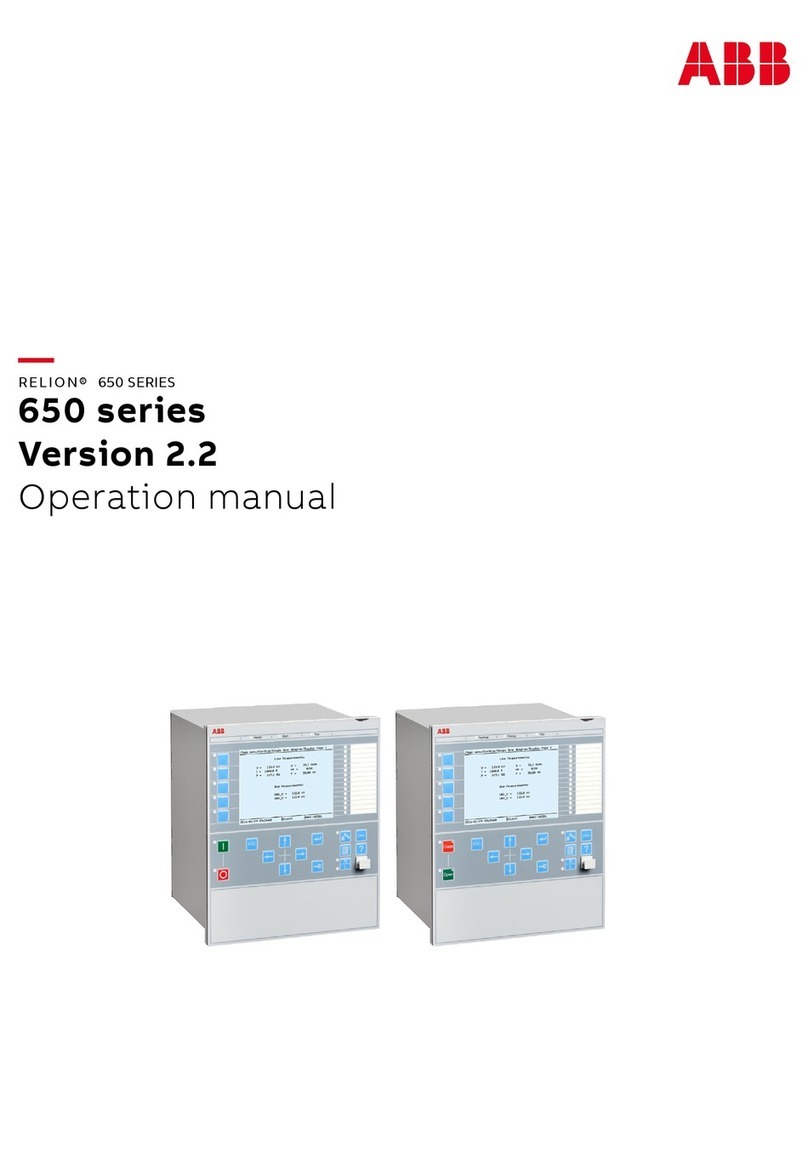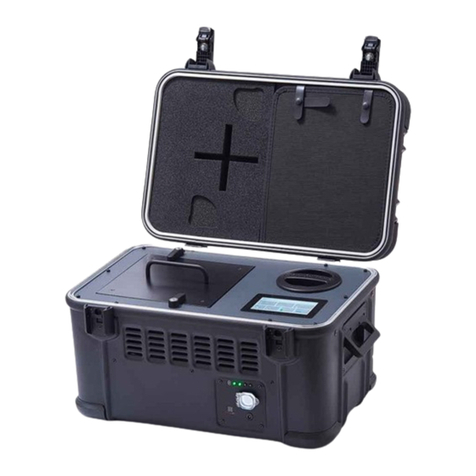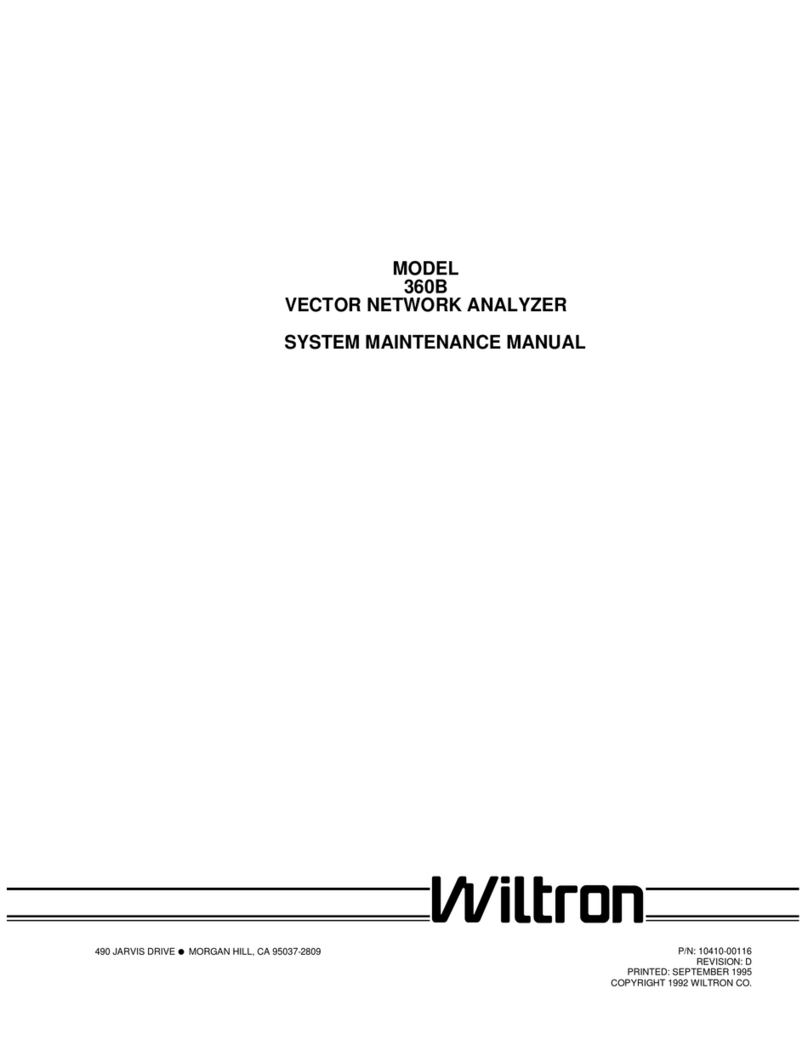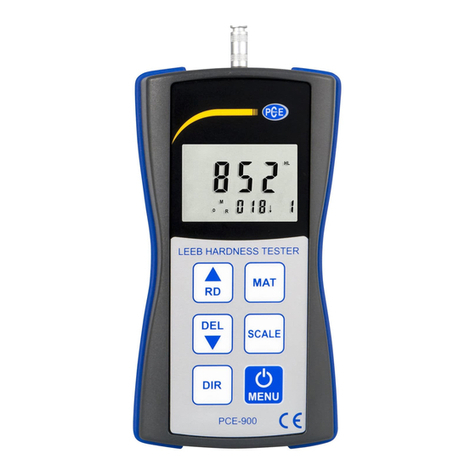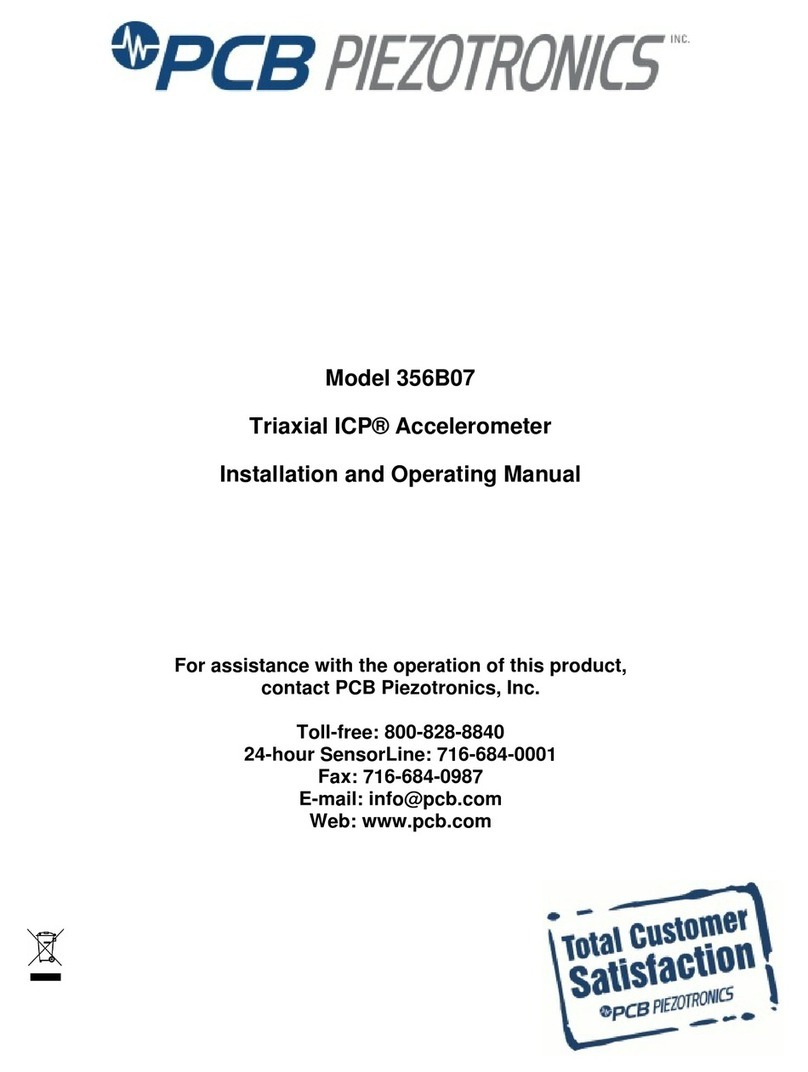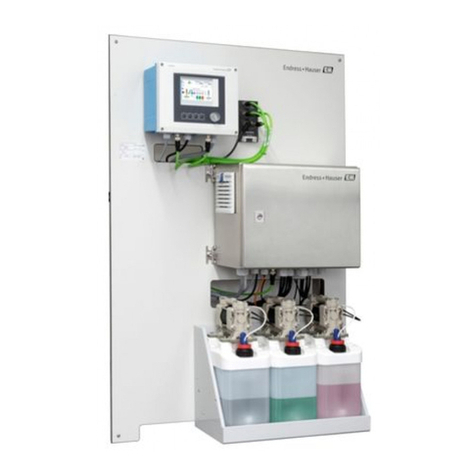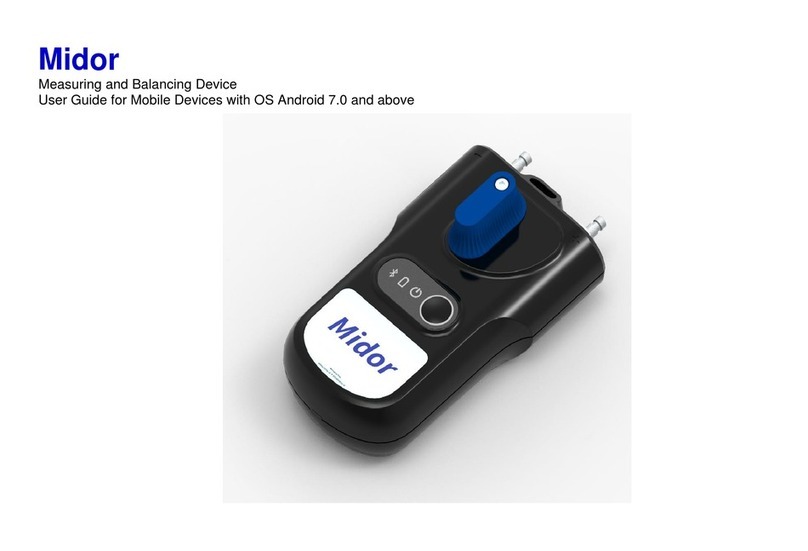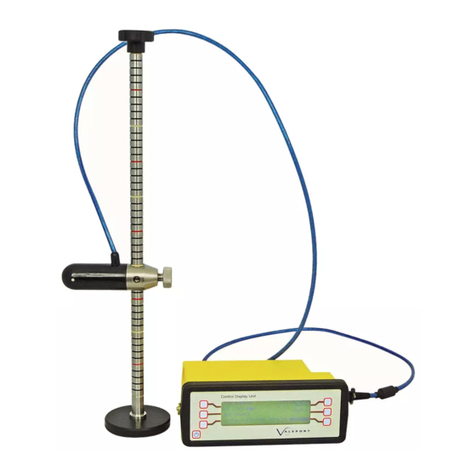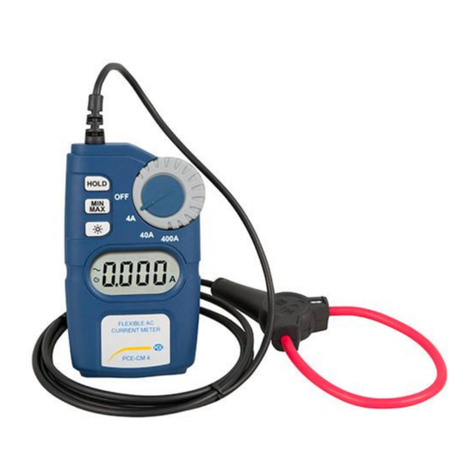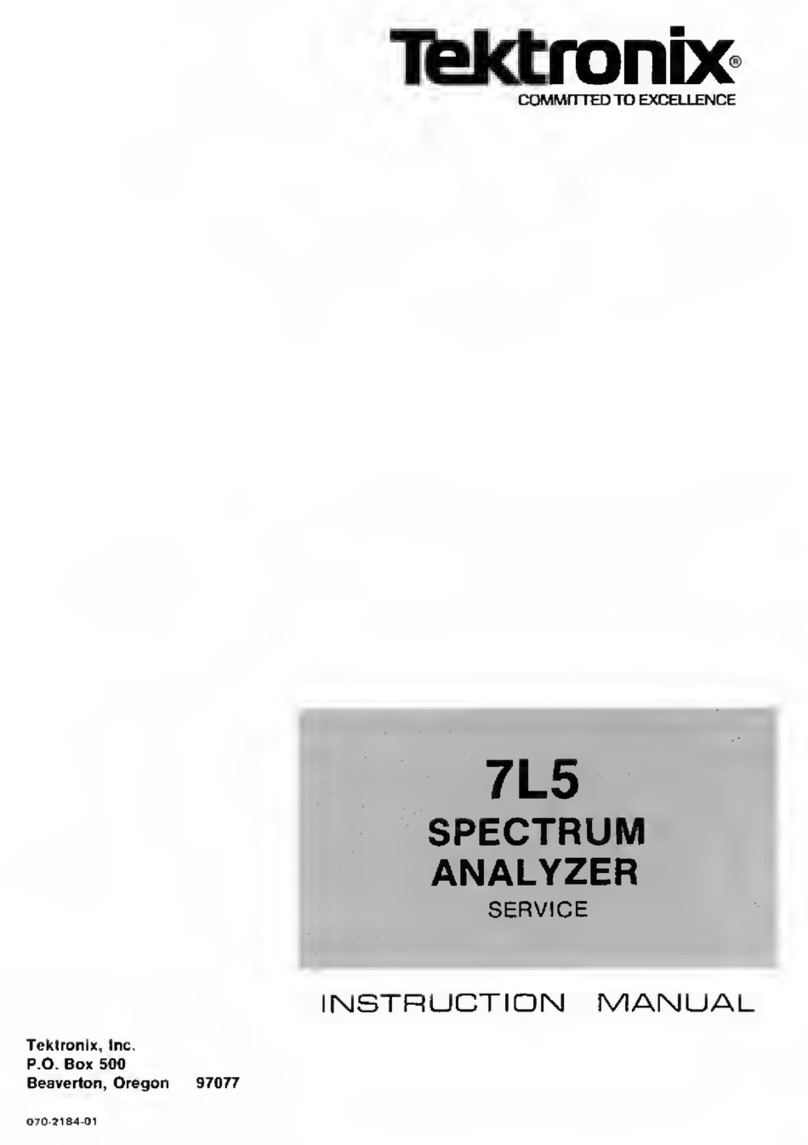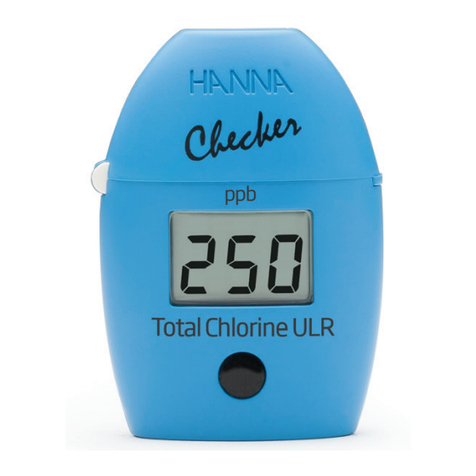Graytechnos photom 205A User manual

Optical Power Meter
MODEL 205A/215
Instruction Manual
HR1055-13J-10/20221205


INDEX
CAUTION ...............................................................................1
1. GENERAL INFORMATION....................................................... 3
2. CONFIGURATION................................................................... 3
3. SPECIFICATIONS ................................................................... 4
3 - 1. General.................................................................................4
3 - 2. Optical ..................................................................................5
4. OPERATING INSTRUCTIONS................................................. 5
4 - 1. Preparation...........................................................................5
4 - 2. Control Panel Descriptions...................................................5
4 - 3. Function keys .......................................................................8
4 - 4. Operation............................................................................10
4 - 5. Light Source Unit and Battery Replacement......................12
4 - 6. Cleaning of the sensor .......................................................13
5. OPTIONALACCESSORIES................................................... 14
6. REPAIR SERVICE INFORMATION ........................................ 15
........................................................................17
1. ...................................................................................... 19
2. ...................................................................................... 19
3. ...................................................................................... 20
31. ............................................................................20
32. .................................................................21
4. ............................................................................... 21
41. ...................................................................................21
42. .................................................................21
43. .......................................................................23
44. ................................................................................25
45. ............................................27
46. ......................................................................28
5. ............................................................................... 29
6. .................................................................... 30

-1-
CAUTION
(1). The surface of the sensor built in the input port should be
kept away from dust or other impurities, in particular, be
careful removing and fitting connectors or adapters. When
not in use, always cover the input/output port with blind
caps.
(2). Before use, clean the Sensor-port with canned air or a
new cotton swab according to "4-6. Cleaning of the
sensor".
(3). Do not insert anything other than the optical fiber
connector into the connector adapter.
(4). Use a standard optical fiber connector. When using a
nonstandard optical fiber connector or a bare fiber adapter,
connect a optical patch code to the connector adapter or
limit the protruding length of the optical fiber ferrule to 0.5
mm. When using a standard optical fiber connector, the
length is less than 0.5 mm. The protruding length is defined
as below.
(5). When using a bare fiber adapter, insert the fiber such that
it does not protrude out of the ferrule end-face.
(6). Do not input optical power greatly beyond the maximum
measuring range, or the photo diode will be damaged.
(7). Excessive ambient noise may affect the normal operation.
In that case, first turn the unit off and then turn it on.
Nevertheless in case of not removing, take the battery off
and put in again, then turn the power “ON” pushing and
holding down the “W/dBm”and “REL” button together.
Figure showing the connection of an optical fiber connector to a connector adapter
Protruding length is the length of the optical
fiber ferrule protruding out of the connector
adapter.
Optical fiber connector
Connector adapter
Optical fiber ferrule

-2-
(8). Do not drop or swing the instrument with the strap.
(9). When measuring in a bright place, do not allow ambient
light to enter the sensor.
(10). Do not input signals to the ANALOG jack. A recorder
should be the one of high impedance (more than 100k).
(11). Never use any AC adapters other than the one intended
for this unit. Use of other AC adapters may damage the
unit.

-3-
1. GENERAL INFORMATION
The hand-held 205A/215 Optical Power Meter is designed to
measure optical power and attenuation from fiber optic
cables/devices used for optical communication.
It is calibrated at four different wavelengths (205A: 660, 780, 820
and 850nm, 215: 850,1300,1310 and 1550nm) and directly reads
the measurements at each wavelength.
The 205A/215 can be accommodated to various kinds of optical
connectors by using an appropriate connector adapter. It can be
used with not only silica but also plastic fibers (POF). In addition to
it, the 205A/215 has an analog output jack to plug a pen recorder
in.
2. CONFIGURATION
This optical power meter consists of the main unit and the sensor,
the light source units (optional) and the connector adapters
(optional) accommodating a variety of fibers.
Fig. 2-1
For information on the connector adapters and the light source
units, refer to Section 5. OPTIONALACCESSORIES.
Light source Unit
Model 205A/215
660, 850nm
1310,1550nm
Bare fiber
Plastic fiber
Silica fiber
Connector adapters
Sensor
Analog output

-4-
3. SPECIFICATIONS
3 - 1. General
Measuring mode: Absolute value measurement (W, dBm)
Relative value measurement (dB, REL)
Measuring period: 3 times per second
Display range: -70dBm to +10dBm(205A),
-70dBm to +5dBm(215)
Resolution: 0.1dB(205A), 0.01dB(215)
or 1/3200 of display range
Display: 3 1/2 digit LCD (max. display: 3200)
All segments flush when the unit is turned on.
Polarity : "-" appears automatically for negative values
Overflow : "Hi" appears when the input power is
beyond the measuring range.
Low-battery: " B " appears when the battery is down.
Light source: “LED”blinks when the light source is ON.
Analog output:
Voltage: Correspond to the W value, DC1mV/count
Plug: 2P Miniature plug
Ranging: Auto / Manual, 7-range(205A), 6-range(215)
Other functions: Auto-Zeroing, Non-volatile memory,
Data hold
Temperature: Operation: -10 to +50
Storage: -20 to +50
Humidity: 80%RH or less (non-condensing)
Power supply: UM-3(AA) battery 4pcs, or
AC100V/120V/220V
using an AC adapter (optional)
Power consumption: Approx. 70mW (LED OFF)
Battery life: Approx. 80 hours (LED OFF,Alkaline)
Dimensions: 90(W) 160(H) 40(D) mm
Weight: Approx. 430g (including batteries)
Accessories: SC type connector adapter 2
UM-3(AA) type battery 4
Hard carrying case 1
2P Miniature plug 1
Blind cap 1
Instruction manual 1

-5-
3 - 2. Optical
MODEL
205A
215
Sensor
Si photodiode
InGaAs photodiode
Sensor
Diameter
8mm
1mm
Wavelength
660, 780
820, 850nm
850, 1300
1310, 1550nm
Measuring
range
- 60dBm to +10dBm
(1nW to 10mW )
- 60dBm to +5dBm
(1nW to 3.2mW )
Uncertainty
(Coverage
factor; k=2)
3%
(850nm, -20dBm after
offset compensation,
23±5)
3%
(1310nm, -10dBm after
offset compensation,
23±5)
4. OPERATING INSTRUCTIONS
4 - 1. Preparation
Install the batteries (4-pcs) in the battery compartment
according to their polarities.
4 - 2. Control Panel Descriptions
Fig. 4 - 2 - 1

-6-
POWER
Press the POWER key to operate the unit.
Press the POWER key again, and the unit will be turned
OFF.
LED
The light source unit (optional) is powered on and starts to
emit. When LED is on, "LED" appears in the display.
Press the LED key again, and the LED mode will be
canceled. This mode shortens the battery life since the light
emission needs much power, so always cancel the LED mode
unless "LED" is necessary.
Function keys
Function keys are described in “4 - 3”section.
INPUT port
This port is used to input optical power from fiber optics
which have been terminated with mating connectors. By
changing the adapter at this port, a variety of connector types
can be accommodated.
The performance and accuracy decrease remarkably due to
dust or dirt. Clean the sensor before use. (Refer to "4 - 6.
Cleaning of the sensor". )
OUTPUT port
Install the light source unit (optional) here. By attaching
appropriate adapters to the top of the light source unit, a
variety of fiber optic cables that have been terminated with
mating connectors can be connected.
Display
The 3 1/2 digit liquid crystal display indicates measuring data
as well as a variety of modes, units and status indicators.
Displayed characters and symbols
HOLD, MANU, B(low-battery), - (minus), REL, dB,
dBm, nW, W, mW, (wavelength),
CAUTION: Do not input optical power greatly beyond
the maximum measuring range, or the
photodiode will be damaged.

-7-
Analog output jack
This jack is used to connect the unit to a recorder with the
miniature plug.
AC adapter jack
This jack is to plug the unit to the AC adapter when
supplying power from AC line. In this case, the batteries
installed in the unit are automatically disconnected.
Battery compartment
Install four batteries here.
CAUTION: (1). Do not input signals to this jack.
(2). A recorder should be the one of high
impedance (more than 100k).
CAUTION: Never use AC adapters other than the one
designated. Use of other AC adapters may
damage the unit.
+
-

-8-
4 - 3. Function keys
Fig. 4 - 3 - 1
W/dBm
The measured optical power is expressed in W or dBm.
When the unit is turned on, it starts in the W mode
automatically. Press this key to change the W mode into dBm
mode. These two modes are selected alternately by pressing
this key. If the unit is turned off and then turned on again, it will
start in the mode in which it was set before turning off.
In the W mode, the optical power is expressed in nW, W or
mW. The MANU and ZEROSET keys can be used in this
mode. In the dBm mode, the optical power is displayed in dBm.
The input power is compared to an absolute value of 1mW
and the difference converted to dB is displayed. This mode is
autoranging only and manual range setting is not possible.
REL (dB)
This mode is used to measure optical loss and attenuation.
Press the REL key and the current input power will be set as
the zero reference level. When subsequent power is input, the
difference between the reference level and the present input
power is expressed in dB. These measurements are called
“relative value”and they can be directly read without manual
calculations.
During the REL mode, "REL" appears in the display. The
REL mode is for autoranging only and manual ranging is not
possible.
If the REL key is pressed again, it will return to dBm mode.
In order to return to the W mode, press the W/dBm key.
ZEROSET
HOLD
MANU
LED
POWER
ON /OFF
MODE
W/dBm
REL(dB)
>1s
A>1s

-9-
(wavelength)
This key is used to select the wavelength. The selected
wavelength is indicated “”on the LCD. Whenever this key is
pressed, the “”will move to other wavelength rotating
through the four. By this operation, manual ranging will be
canceled. The last wavelength selected when the unit is
turned off will be recalled at next power on.
ZEROSET >1s
This key is used for automatic offset compensation of the
optical input port, to cancel out the offset voltage, which may
cause large errors when measuring extremely low light levels.
To make this compensation, completely shade the input port
with the blind cap and press this key for more than 1 second
(>1s). The display will start to countdown and the
compensation will complete in about 10 seconds. It does not
work when the unit is in the REL or HOLD mode.
If shading of the input port is not enough so that the
compensation cannot be accomplished, “Err”will appear in the
display. In this case, press this key again to cancel the
compensation.
HOLD
This mode is used to freeze the measurements in the display.
During the HOLD mode, "HOLD" appears in the display and
the MANU and REL keys are inoperative. By pressing the
W/dBm key, the measurement held in the display will be
converted to W or dBm. Press the HOLD key again, and the
HOLD mode will be canceled.
When the unit is turned off in the HOLD mode, it will
automatically start in the HOLD mode at next power on.
MANU A>1s
This mode is used to set the measuring range manually.
When the unit is turned on, the autoranging is automatically
selected. Press this key to change it to manual ranging mode.
The first pressing of the key will hold the range set by the
autoranging mode and subsequent pressing will change the
range to upper ones. When pressing the key at the uppermost
range, it moves down to the lowest one.

-10-
Fig. 4 - 3 - 2
In order to return to the autoranging mode, press the W/dBm
key or press and hold the MANU key for more than 1 second
(A>1s).
If the unit is turned off in the manual ranging mode, it will
start in the same mode and the range selected when the unit
was turned off at the next power on.
[W/dBm] + [REL] + [POWER ON] : Reset
In order to cancel all the setting levels and operating modes,
and return to the initial condition, hold down the W/dBm and
REL keys together and press the POWER key on.
4 - 4. Operation
Turn the unit on. Make sure that the display will vary in
response to ambient light when the blind cap is taken off.
(1). Offset compensation
With the unit remaining in the W or dBm mode, put the blind
cap on the input port and press the ZEROSET key for more
than 1 second to start automatic compensation. (During the
compensation, the mode and the unit indicators are not
displayed.)
(2). Wavelength selection
Press the key to move the indicator to the desired
wavelength on the LCD.
AUTO
R1
R4
R2
R3
R5
R6
R7
lowest range
uppermost range
MANU

-11-
(3). Measurement
Remove the blind cap and tightly
attach a connector adapter
appropriate to the fiber connector
used for measurement.
To get accurate measurements,
do not allow ambient light to enter
the sensor and maintain the fiber
in the same physical configuration
during measurements as well as
tighten the connectors securely.
Always keep dust or dirt away
from the sensor.
(Refer to "4 - 6. Cleaning of the sensor". )
During measurement, if the optical power input is out of the
measurement range, the following over/under range indicators
will appear in the display.
W: "Hi" will appear when overloading more than
3200-count or 10mW(205A) or 3.2mW(215)
dBm/REL: "HI" will appear for excessive input of
+10.0dBm(205A) or +5.0dBm(215)
"Lo" will appear if the power is less than -70dBm.
a).Absolute value measurement
Select either the W or dBm mode. Autoranging is used for
measurement. In the W mode, manual ranging may also be
used to select an appropriate measurement range. The
measurements should be read after the display is settled
sufficiently.
b). Relative value measurement
This function is used to measure variations of the power.
Input the first power in the W or dBm mode, then press the
REL key.
This input power will be set as the reference level.
Measure the next power and the difference between the
input power and the reference level will be converted to dB
and displayed. By pressing the REL key again, it moves to
the dBm mode and the reference is cleared.
Fiber
Connector
Blind cap
Input port
Connector
adapter
Fig. 4 - 4 - 1

-12-
4 - 5. Light Source Unit and Battery Replacement
(1). Light source unit replacement
Turn the unit off before
replacement. Slide the removal
catch upward so that the light
source unit pops out. When fitting
the light source unit, align the key
groove of the main unit and the
light source unit, and insert the
light source unit until it clicks into
position.
(2). Battery replacement
If " BT " appears in the display,
replace the batteries to new ones.
Change all four batteries at the
same time and avoid using old
batteries mixed with new ones.
Pops out
Light source unit
Slide up
Removal catch
Rear side
Fig. 4 - 5 - 1
Lid
Batteries
Fig. 4 - 5 - 2
Rear side
UM-3(AA)
4pcs

-13-
4 - 6. Cleaning of the sensor
Remove the connector adapter or the protection cap from
the sensor port before use, and confirm if dirt or dust are not
on the sensor surface using the magnifying glass. Blow it off
with a clean air-blow when the sensor is dirty.
When dirt on the sensor cannot be taken only by the air,
rub the sensor gently with the cotton swab. The cotton swab
must be unused and dried one. Confirm if dirt is taken off
completely with the magnifying glass.
Throw away the used cotton swab without using it again.
When dirt still sticks to the sensor surface of MODEL 215,
clean it by the following methods.
Drip absolute ethanol to the sensor surface by
several drops, and rub gently with the cotton swab.
Immediately wipe and take off the ethanol on the
sensor surface with a new, dry cotton swab.
Observe the sensor surface with the magnifying glass.
When dirt remains, repeat . Throw away the used
cotton swab without using it again.
Caution: Before cleaning the sensor, the connector
adapter must be removed.
Warning: Do not clean the sensor surface of MODEL
205A with an organic solvent such as
ethanol. The solvent may damage the
sensor surface.
Warning: The sensor surface of MODEL 215 is the
glass of 0.3 mm in thickness. Do not clean
the sensor directly with cleaning tools such
as "Ferrule-mate", "One-Click-Cleaner" or
"CLETOP-stick", with the connector adapter
attached. Do not rub the sensor surface
strongly, or sensor may be broken or
damaged.

-14-
5. OPTIONALACCESSORIES
In order to enable the instrument to provide additional
measuring functions, the following optional products are available.
Connector adapter / AC adapter
Model No.
Remarks
Connector
adapter
180-FC
NTT
FC
180-SC
NTT
SC
180-MU
NTT
MU
180-ST
Lucent
ST
180-LC
Lucent
LC
180-SMA
Anphenol
SMA,906/905
180-HTL
Toslink
TOCP100, 150, 155, 200,
255
Sumilink
CF-1000, 1500, 1550, 1001,
1501, 200, 2150, 2001
JIS
F05, F07
180-HDL
FCI
Data link
Hitachi
DC link
JIS
F06, F08
180-HPP
HP
HFBR-0500
AC adapter
DP1005
AC100V50/60Hz
DP-1206
AC120V60Hz
DP-2206
AC220V50Hz
Light Source Unit
Model No.
Remarks
Light
Source
Unit
310-065CF
655nm
LED
APF, Sumilink, Toslink
310-066LS
660nm
LED
APF
310-081CF
810nm
LED
HPCF,Sumilink, Toslink
310-085LS
850nm
LED
GISI
310-131LS
1310nm
LED
GI
310-131LD
1310nm
LD
SM
310-155LD
1550nm
LD
SM

-15-
6. REPAIR SERVICE INFORMATION
When making requests for repair service, please bring the
product to the distributor or send it directly to Graytechnos Head
Office in Tokyo, Japan.
When sending it, always pack it in its original or equivalent
packing material and pack together with your name, address and
telephone number.
To ensure speedy and reliable repair, always include
information as to the type of failure and cause. If required, always
return accessories with the product.
When contacting us, provide the serial number of the product.
- Specifications are subject to change without notice.

-16-
Warranty
Graytechnos Co.,Ltd. warrants this product to be free from
defects in material and/or workmanship for one full year from date
of shipment. During the warranty period, we will, at our option,
repair or replace any product, which proves to be defective.
For warranty service, send the product prepaid to the distributor
or Graytechnos Head Office in Tokyo, Japan. The repaired product
will be returned prepaid to Buyer.
Limitation of Warranty
This warranty shall not apply to defects resulting from any
misuse, misapplication, unauthorized modification, improper
maintenance or operation or storage outside of the environmental
specifications.
Graytechnos makes no other warranties, expressed or implied,
including without limitation thereof, any implied warranty of
merchantability or fitness for a particular purpose.
Graytechnos shall not be responsible for any direct, indirect,
special, incidental or consequential damages.
Graytechnos Co.,Ltd.
BILBOT BLDG. 2F, Ueno 1-9-2, Taito-ku, Tokyo, 110-0005 Japan
Phone:+81-3-5807-6081
Fax:+81-3-5807-6082
www.graytechnos.com
email: customer@graytechnos.com

-17-
(1).
(2). 4-6
(3).
(4).
0.5mm
0.5mm
(5).
(6).
(7).
W / dBmREL
(8).
0.5mm
This manual suits for next models
1
Table of contents
Other Graytechnos Measuring Instrument manuals
